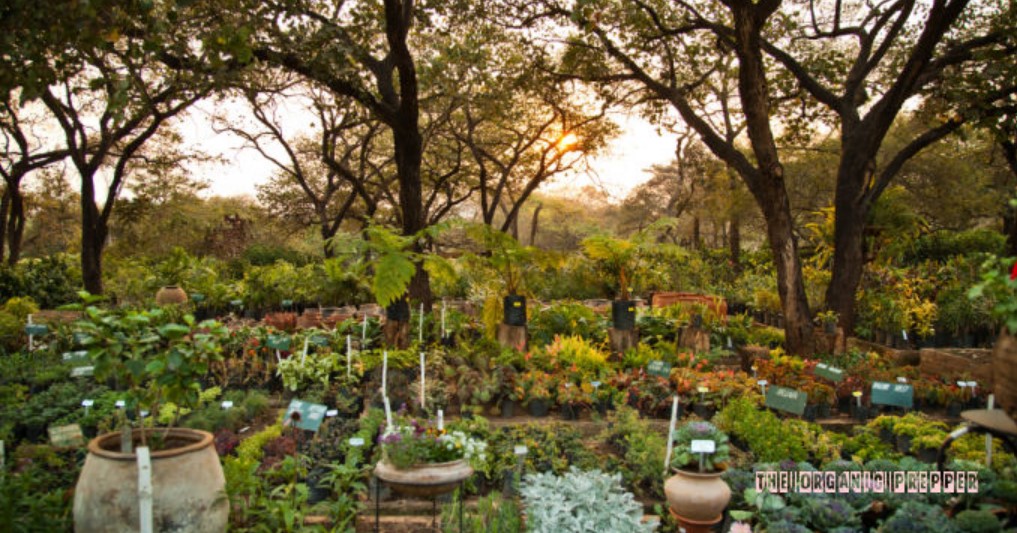How to Create a Food Forest in Your Backyard
March 27, 2023

By J.G. Martinez
Creating a food forest in your backyard is a great way to produce your own food, reduce your carbon footprint, and create a sustainable living environment. A food forest is a low-maintenance, sustainable system that mimics a natural forest ecosystem, with layers of plants that work together to provide food and other benefits.
In this article, we will discuss the steps you can take to create a food forest in your own backyard.
Assessing your site is a crucial step in creating a food forest, as it will impact the success of your project. You need to consider several factors such as soil type, topography, climate, and existing vegetation.
Soil type: The soil type will determine what kind of plants will thrive in your area. For example, if you have sandy soil, you will need to choose plants that are adapted to grow in that environment. To determine your soil type, you can conduct a soil test and look at the soil texture.
Topography: The topography of your site will impact the water flow and drainage patterns. You need to consider how water flows through your site and where it collects. This will help you design your food forest to capture and manage water efficiently. Another important point here is concealment. Using the terrain in your favor you can avoid many problems.
Climate: The climate of your area will determine what kind of plants will grow well. You need to consider the average temperature, rainfall, and growing season. You can research your area’s USDA hardiness zone to determine which plants are suitable for your area.

Prepper’s Pantry: Build a Nutritious Stockpile to Survive Blizzards, Blackouts, Hurricanes, Pandemics, Economic Collapse, or Any Other Disasters by Daisy Luther
Existing vegetation: You need to consider the plants that are already growing in your area. If you have a lot of trees, you may need to design your food forest around them. You can also incorporate existing vegetation into your food-forest design and choose plants that complement them.
By assessing your site, you can determine which plants will thrive in your area and create a food forest that is sustainable and low maintenance. It is important to choose plants that are adapted to your area to ensure the success of your food forest.
Choose plants that are native or adapted to your area, as they will be better suited to your climate and soil conditions.
Canopy trees: Canopy trees are tall trees that provide shade and shelter for the other layers. They are typically slow-growing and long-lived and can include species such as oak, maple, and hickory. Choose canopy trees that are adapted to your area and have a deep root system to improve soil health.
Understory trees: Understory trees are smaller trees that grow beneath the canopy and provide fruits and nuts. They can include species such as apple, cherry, and peach. Choose understory trees that are adapted to your area and have a shallow root system to avoid competition with the canopy trees.
Shrubs: Shrubs are medium-sized plants that produce berries, fruits, and nuts. They can include species such as blueberry, raspberry, and hazelnut. Choose shrubs that are adapted to your area and have a deep root system to improve soil health.
Herbaceous plants: Herbaceous plants are plants that die back to the ground each year, such as vegetables, fruits, and herbs. They can include species such as tomatoes, kale, and basil. Choose herbaceous plants that are adapted to your area and have a shallow root system to avoid competition with the other layers.
Groundcovers: Groundcovers are low-growing plants that provide erosion control and weed suppression. They can include species such as clover, thyme, and creeping phlox. Choose groundcovers that are adapted to your area and have a shallow root system to avoid competition with the other layers.
Vines: Vines are climbing plants that produce fruits and nuts. They can include species such as grape, kiwi, and passionfruit. Choose vines that are adapted to your area and have a deep root system to improve soil health. Passionfruit usually grows like crazy here in Venezuela, and its very high content of Vitamin C makes it one of my favorites. They are useful for concealing buildings, too. We have them available the whole year.
Root crops: Root crops are plants that grow underground, such as potatoes and carrots. They can be planted in between other plants or in dedicated beds. Choose root crops that are adapted to your area and have a shallow root system to avoid competition with the other layers.
When choosing plants for your food forest, it is important to select native or adapted species that are suited to your soil, climate, and microclimate. This will ensure that your food forest is sustainable and low maintenance. You can also incorporate beneficial companion plants, such as nitrogen-fixing plants, to improve soil health and increase biodiversity.

How to Feed Your Family No Matter What: An Anthology of Self-Reliant Food Production, Acquisition, Preservation, and Preparation by Daisy Luther
When you plan your layout, please consider the spacing and placement of your plants. Trees should be spaced far enough apart to allow for their mature size but close enough to create a canopy. Shrubs and groundcovers can be planted closer together to create a dense understory.
As you plant, be sure to mulch around each plant to retain moisture and suppress weeds. You may also want to add organic matter such as compost or manure to improve the soil.
A food forest is a long-term investment that will provide food and other benefits for years to come. By following these steps, you can create a sustainable, low-maintenance system that will enhance your micro retreat, homestead, or mini compound.
Let’s discuss food forests in the comments.
Source: The Organic Prepper
Jose is an upper middle class professional. He is a former worker of the oil state company with a Bachelor’s degree from one of the best national Universities. He has an old but in good shape SUV, a good 150 square meters house in a nice neighborhood, in a small but (formerly) prosperous city with two middle size malls. Jose is a prepper and shares his eyewitness accounts and survival stories from the collapse of his beloved Venezuela. Jose and his younger kid are currently back in Venezuela, after the intention of setting up a new life in another country didn’t go well. The SARSCOV2 re-shaped the labor market and South American economy so he decided to give it a try to homestead in the mountains, and make a living as best as possible. But this time in his own land, and surrounded by family, friends and acquaintances, with all the gear and equipment collected, as the initial plan was.
Follow Jose on YouTube and gain access to his exclusive content on Patreon. Donations: paypal.me/JoseM151
THANKS TO: https://www.activistpost.com/2023/03/how-to-create-a-food-forest-in-your-backyard.html
March 27, 2023

By J.G. Martinez
Creating a food forest in your backyard is a great way to produce your own food, reduce your carbon footprint, and create a sustainable living environment. A food forest is a low-maintenance, sustainable system that mimics a natural forest ecosystem, with layers of plants that work together to provide food and other benefits.
In this article, we will discuss the steps you can take to create a food forest in your own backyard.
Step 1: Assess Your Site
The first step in creating a food forest is to assess your site. Look at the soil type, topography, climate, and existing vegetation to determine which plants will thrive in your environment. Consider the amount of sunlight your site receives each day, as well as any natural water sources or drainage patterns. You may also want to conduct a soil test to determine the pH and nutrient levels.Assessing your site is a crucial step in creating a food forest, as it will impact the success of your project. You need to consider several factors such as soil type, topography, climate, and existing vegetation.
Soil type: The soil type will determine what kind of plants will thrive in your area. For example, if you have sandy soil, you will need to choose plants that are adapted to grow in that environment. To determine your soil type, you can conduct a soil test and look at the soil texture.
Topography: The topography of your site will impact the water flow and drainage patterns. You need to consider how water flows through your site and where it collects. This will help you design your food forest to capture and manage water efficiently. Another important point here is concealment. Using the terrain in your favor you can avoid many problems.
Climate: The climate of your area will determine what kind of plants will grow well. You need to consider the average temperature, rainfall, and growing season. You can research your area’s USDA hardiness zone to determine which plants are suitable for your area.

Prepper’s Pantry: Build a Nutritious Stockpile to Survive Blizzards, Blackouts, Hurricanes, Pandemics, Economic Collapse, or Any Other Disasters by Daisy Luther
Existing vegetation: You need to consider the plants that are already growing in your area. If you have a lot of trees, you may need to design your food forest around them. You can also incorporate existing vegetation into your food-forest design and choose plants that complement them.
By assessing your site, you can determine which plants will thrive in your area and create a food forest that is sustainable and low maintenance. It is important to choose plants that are adapted to your area to ensure the success of your food forest.
Choose your plants
Once you have assessed your site, you can start choosing the plants you want to include in your food forest. A food forest typically includes seven layers of plants, each providing a different function in the ecosystem. These layers include:- Canopy trees – tall trees that provide shade and shelter for the other layers
- Understory trees – smaller trees that grow beneath the canopy and provide fruits and nuts
- Shrubs – medium-sized plants that produce berries, fruits, and nuts
- Herbaceous plants – plants that die back to the ground each year, such as vegetables, fruits, and herbs
- Groundcovers – low-growing plants that provide erosion control and weed suppression
- Vines – climbing plants that produce fruits and nuts
- Root crops – plants that grow underground
Choose plants that are native or adapted to your area, as they will be better suited to your climate and soil conditions.
Here are some examples of each layer.
Choosing the right plants for your food forest is a crucial step as it will determine the success of your project. A food forest typically includes seven layers of plants, each providing a different function in the ecosystem. Here are some tips for choosing the right plants for each layer:Canopy trees: Canopy trees are tall trees that provide shade and shelter for the other layers. They are typically slow-growing and long-lived and can include species such as oak, maple, and hickory. Choose canopy trees that are adapted to your area and have a deep root system to improve soil health.
Understory trees: Understory trees are smaller trees that grow beneath the canopy and provide fruits and nuts. They can include species such as apple, cherry, and peach. Choose understory trees that are adapted to your area and have a shallow root system to avoid competition with the canopy trees.
Shrubs: Shrubs are medium-sized plants that produce berries, fruits, and nuts. They can include species such as blueberry, raspberry, and hazelnut. Choose shrubs that are adapted to your area and have a deep root system to improve soil health.
Herbaceous plants: Herbaceous plants are plants that die back to the ground each year, such as vegetables, fruits, and herbs. They can include species such as tomatoes, kale, and basil. Choose herbaceous plants that are adapted to your area and have a shallow root system to avoid competition with the other layers.
Groundcovers: Groundcovers are low-growing plants that provide erosion control and weed suppression. They can include species such as clover, thyme, and creeping phlox. Choose groundcovers that are adapted to your area and have a shallow root system to avoid competition with the other layers.
Vines: Vines are climbing plants that produce fruits and nuts. They can include species such as grape, kiwi, and passionfruit. Choose vines that are adapted to your area and have a deep root system to improve soil health. Passionfruit usually grows like crazy here in Venezuela, and its very high content of Vitamin C makes it one of my favorites. They are useful for concealing buildings, too. We have them available the whole year.
Root crops: Root crops are plants that grow underground, such as potatoes and carrots. They can be planted in between other plants or in dedicated beds. Choose root crops that are adapted to your area and have a shallow root system to avoid competition with the other layers.
When choosing plants for your food forest, it is important to select native or adapted species that are suited to your soil, climate, and microclimate. This will ensure that your food forest is sustainable and low maintenance. You can also incorporate beneficial companion plants, such as nitrogen-fixing plants, to improve soil health and increase biodiversity.

How to Feed Your Family No Matter What: An Anthology of Self-Reliant Food Production, Acquisition, Preservation, and Preparation by Daisy Luther
Plan your layout
Once you have chosen your plants, you can start planning your layout. A food forest is typically designed in a naturalistic way, with winding paths and irregular shapes. You can use the existing topography and vegetation to guide your design and incorporate features such as ponds, swales, and berms to manage water flow.When you plan your layout, please consider the spacing and placement of your plants. Trees should be spaced far enough apart to allow for their mature size but close enough to create a canopy. Shrubs and groundcovers can be planted closer together to create a dense understory.
Prepare your site
Before you start planting, you will need to prepare your site. This may involve removing any existing vegetation, improving the soil, and installing any necessary infrastructure, such as irrigation or composting systems. You may also want to install a perimeter fence to keep out deer and other wildlife.Plant your food forest
Once your site is prepared, you can start planting your food forest. Start with the canopy trees, and work your way down through the layers. Plant in groups or guilds, with plants that have complementary functions and can support each other. For example, you might plant a nitrogen-fixing shrub next to a fruit tree, or a groundcover that attracts beneficial insects next to a vegetable bed.As you plant, be sure to mulch around each plant to retain moisture and suppress weeds. You may also want to add organic matter such as compost or manure to improve the soil.
Maintain your food forest
Once your food forest is established, it will require minimal maintenance. You may need to prune trees and shrubs to maintain their shape and promote fruiting, and weed around young plants until they are established. Some layers will need to be replanted yearly, for your annual vegetables. You can also add additional plants and layers over time to increase diversity and productivity.A food forest is a long-term investment that will provide food and other benefits for years to come. By following these steps, you can create a sustainable, low-maintenance system that will enhance your micro retreat, homestead, or mini compound.
What are your thoughts?
Have you begun adding any kind of permaculture to your property? Do you have a food forest? Are you interested in creating one? Do you have any pros or cons to add to this or advice to someone just getting started with it?Let’s discuss food forests in the comments.
Source: The Organic Prepper
Jose is an upper middle class professional. He is a former worker of the oil state company with a Bachelor’s degree from one of the best national Universities. He has an old but in good shape SUV, a good 150 square meters house in a nice neighborhood, in a small but (formerly) prosperous city with two middle size malls. Jose is a prepper and shares his eyewitness accounts and survival stories from the collapse of his beloved Venezuela. Jose and his younger kid are currently back in Venezuela, after the intention of setting up a new life in another country didn’t go well. The SARSCOV2 re-shaped the labor market and South American economy so he decided to give it a try to homestead in the mountains, and make a living as best as possible. But this time in his own land, and surrounded by family, friends and acquaintances, with all the gear and equipment collected, as the initial plan was.
Follow Jose on YouTube and gain access to his exclusive content on Patreon. Donations: paypal.me/JoseM151
THANKS TO: https://www.activistpost.com/2023/03/how-to-create-a-food-forest-in-your-backyard.html






 Sat Mar 23, 2024 11:33 pm by globalturbo
Sat Mar 23, 2024 11:33 pm by globalturbo

